Knolly Delirium
Wheel Size: 29’’ front / 27.5” rear
Travel: 190 mm rear / 190 – 203 mm front
Geometry highlights:
- Sizes offered: S (S2), M (S3), L (S4), XL (S5)
- Headtube angle: 63° (Neutral), 62.25° (Slack)
- Reach: 506 mm (size Large / S4)
- Chainstay length: 447 mm (size Large / S4)
Frame material: Aluminum
Price: Frame w/ Fox DHX2 shock: $3,199 USD / $4,299 CAD
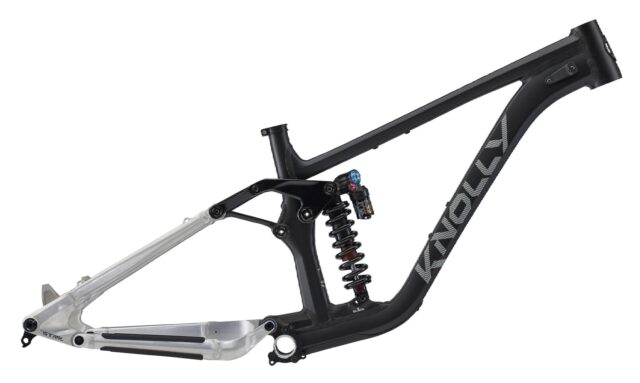
Intro
Knolly is a storied Canadian brand, beginning as a passion project of Noel Buckley in the early 2000s. With roots in the North Shore Freeride scene in Vancouver, the Knolly brand has evolved substantially, catering to riders who value the longevity and durability of a high-end aluminum frame.
The Delirium was among the first models ever made by Knolly, beginning as a 160mm-travel Freeride bike before graduating to 175 mm several years ago. Making its return to the Knolly lineup as a frame-only offering, the new Delirium is now in its burliest form yet as a 190 mm rear travel bike aimed at Freeride and Park riding. With mixed wheels, dual crown compatibility, size-specific chainstays, and a host of refinements to Knolly’s Fourby4 suspension design, the Delirium takes the spot as the burliest, longest-travel bike in Knolly’s lineup. Read on for more on the wide range of updates to the Delirium.
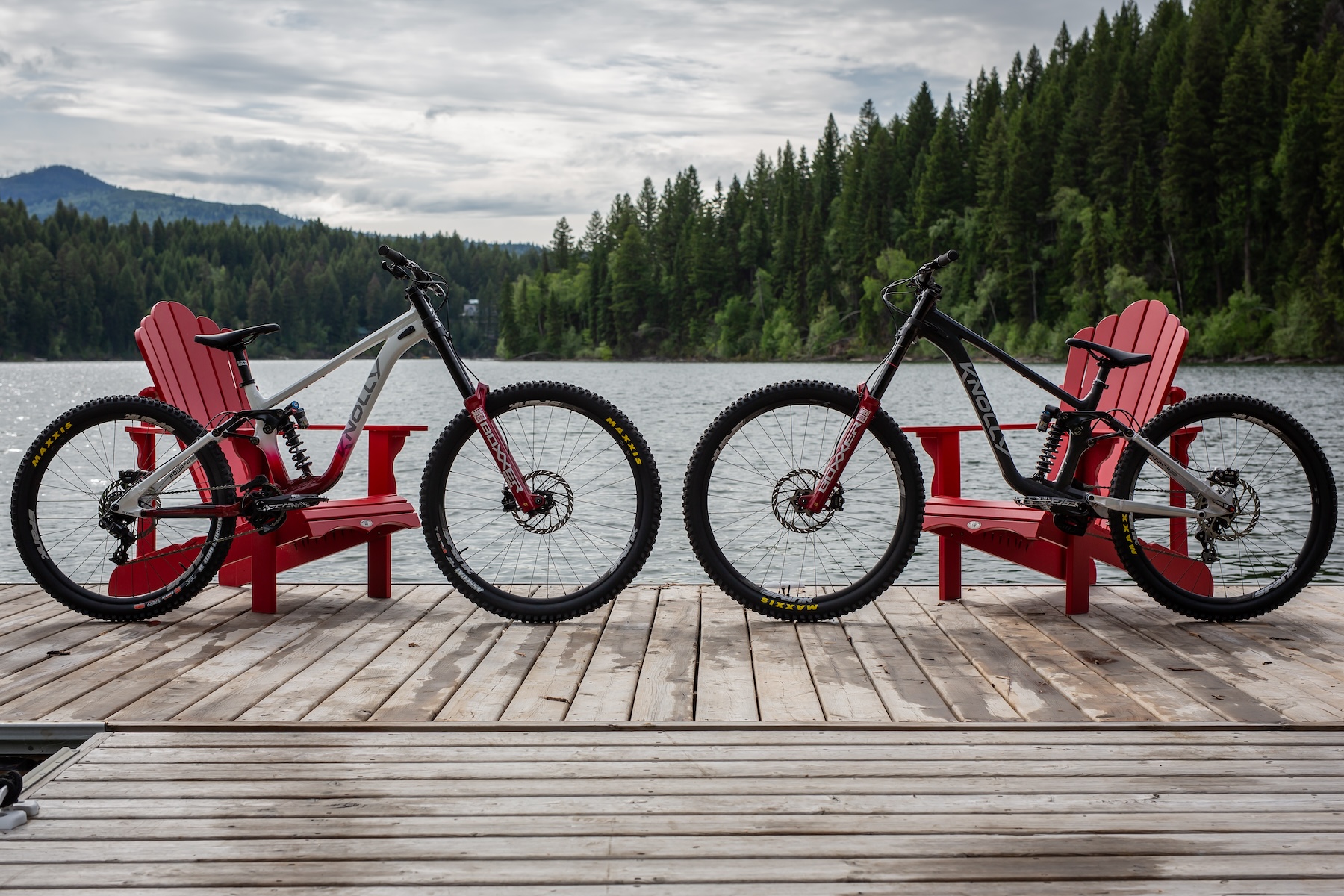
The Frame
The Delirium, like all other current Knolly full suspension frames, is an all-aluminum affair. Knolly has earned a loyal following over the years for its no-nonsense focus on durability, but some unconventional aesthetics also polarized plenty of internet commenters. As with Knolly’s latest run of new bikes, the Delirium gets the same simplified design language that brings both a sleeker linkage design and a straight top tube — updates that I think make for an attractive, refined-looking frame.
Speaking of the linkage, Knolly’s signature Fourby4 design persists with the Delirium, which follows a conventional four bar Horst layout but adds an additional pair of links to drive the shock. Knolly says that the design allows them to separate wheel path from leverage curve as independent variables when designing suspension kinematics for each model, but it does add a bit of complexity by adding several additional pivot points. With the Delirium, Knolly says that they’ve tuned the suspension to prioritize grip and downhill performance, though we haven’t seen a leverage curve to confirm other details like the progression rate, etc.
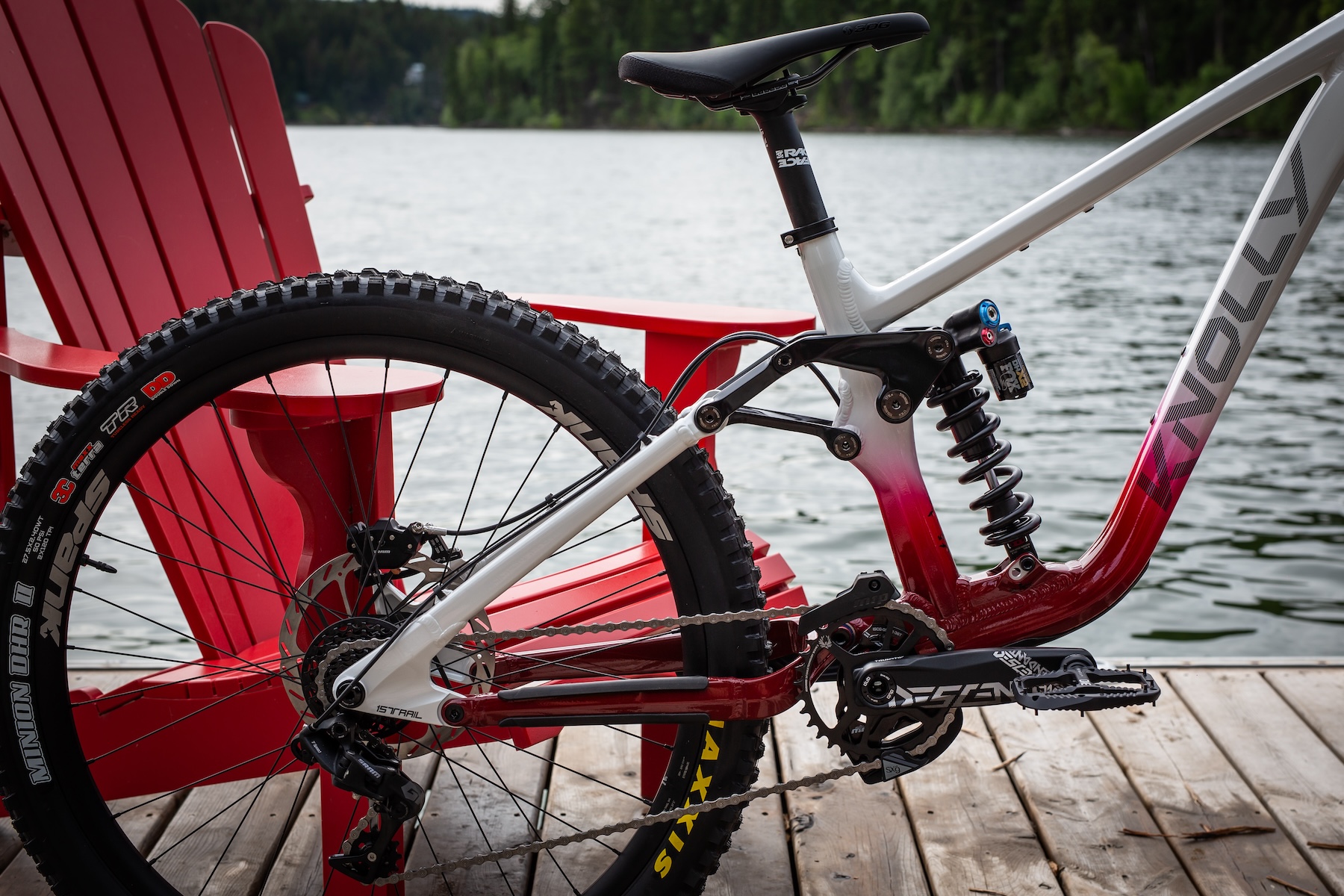
Knolly has continually refined the layout over time, streamlining the looks while also making other updates like moving away from bushings to using Enduro bearings at all pivot points for better longevity. Also new with the latest crop of bikes from Knolly is the move to a one-piece link to drive the shock, which improves stiffness and prevents lateral forces from reaching the shock. For the mechanically inclined, flat tooling surfaces at all pivot points also means that the inevitable bearing swap down the road will be that much less painful.
The Delirium is a dedicated mixed wheel affair, meaning that it is only designed to run a 27.5’’ rear wheel. While 29’’ rear wheel fans may find that limiting, a smaller 27.5’’ wheel makes a whole lot of sense on a bike intended to be a lift access and shuttle-oriented Freeride and Park bike. For folks that like to earn their turns, Knolly’s uninterrupted seat tube design also means that rather long droppers can be fitted without issue — Knolly claims that most 200 mm droppers can be fitted even on the size Small / S2.
Like other Knolly models, the Delirium gets SRAM’s UDH standard as well as Super Boost spacing, which Knolly calls 157Trail. Despite claims of rear end stiffness, clearance, and chainline improvements, the relatively small number of other Super Boost bikes on the market means that sourcing a rear wheel could be a bit of a pain. The rear brake is a 180 mm post mount standard, and Knolly has added accessory mounts under the top tube, too.
Fit & Geometry
Knolly’s latest crop of bikes has pushed toward the forefront of the long front-center movement, and the Delirium follows that trend. A size Large / S4 Delirium gets a whopping 506 mm reach, paired with a 643 mm effective top tube length — numbers that wouldn’t look out of place on most brands’ XL bikes. A 630 mm stack measurement isn’t particularly tall, which may give riders some ability to shorten the lengthy cockpit slightly if they’d like by adding spacers under the stem.
A second position at the lower shock mount allows for adjustment of the headtube angle between 63° in Neutral and 62.25° in Slack, further illustrating the Delirium’s aggressive intentions. Considering the long front-center and slack head angle, it’s great to also see Knolly using fairly lengthy and size-specific chainstays, which see 4 mm steps between sizes and measure up at 447 mm on the size Large / S4.
The Delirium is not a bike necessarily designed with climbing in mind, but for folks that are so inclined, the effective seat tube angle sits at 77.5° in Neutral and 76.5° in Slack. Knolly’s use of an offset seat tube does mean that actual seat tube angle is fairly slack, but Knolly publishes their reference saddle height to give a better sense of how effective seat tube angle is derived — something we wish all brands were on board with.
All of these figures are based on a 200 mm dual crown fork, which has approximately the same axle-to-crown height as a 190 mm single crown fork. Knolly recommends a 190 – 203 mm fork for proper geometry.
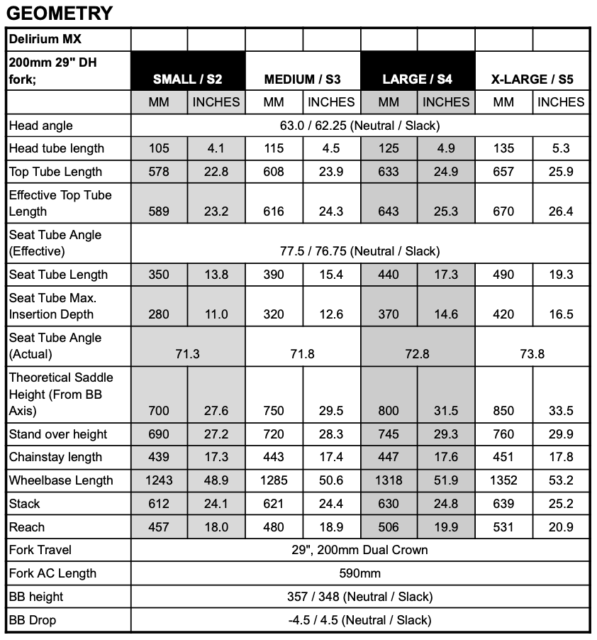
The Build
At least at this point, Knolly is making the Delirium available as a limited-release frame only. That means that parts selection will be entirely left up to the buyer, aside from the inclusion of the Fox DHX2 rear shock. At the $3,199 USD / $4,299 CAD asking price, the Delirium is a fairly serious investment for a bike that’s likely to be a second or third bike in someone’s garage, but it’s also a unique option in the relatively smaller market of Park-focused bikes.
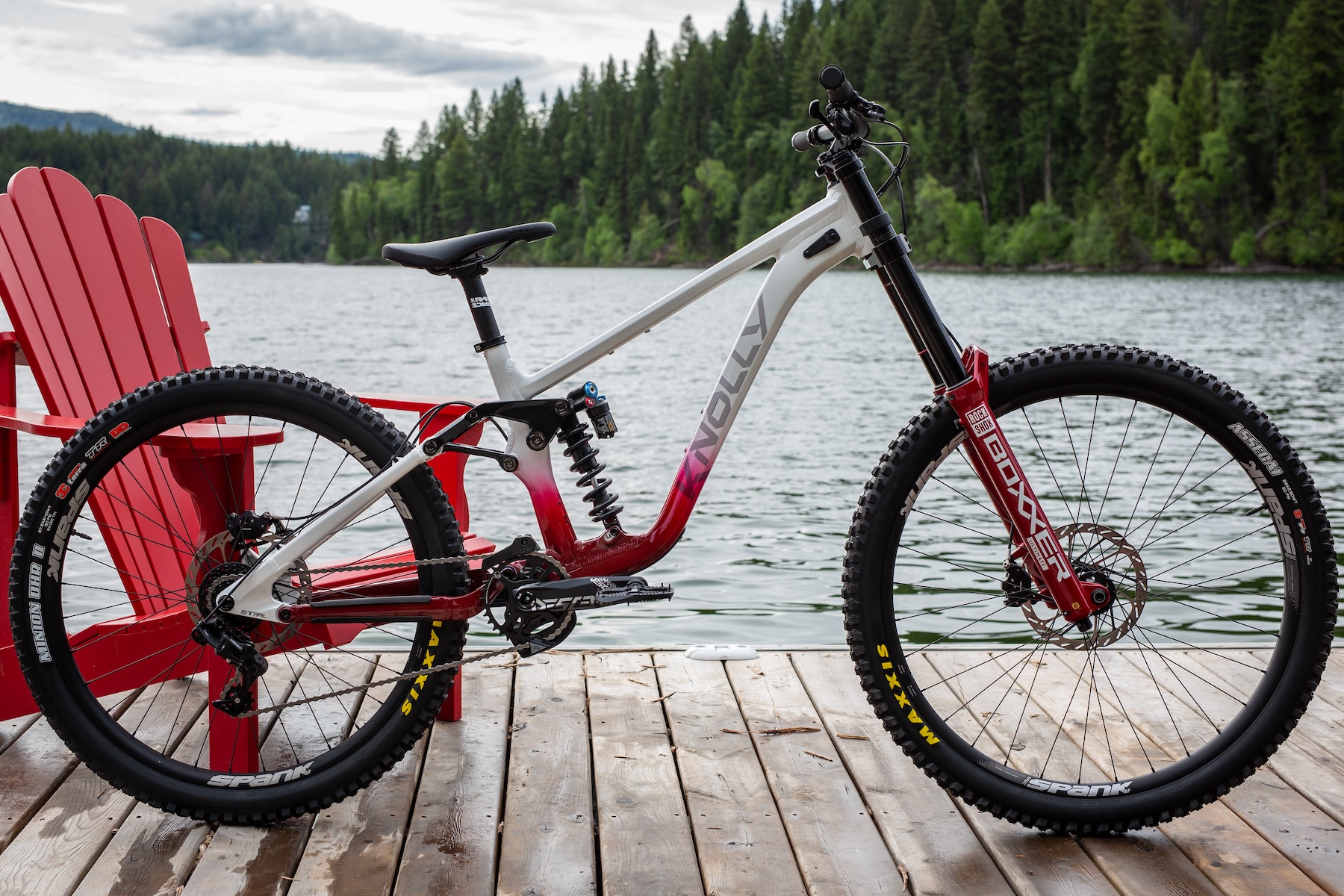
Some Questions / Things We’re Curious About
(1) The Delirium prioritizes descending, but does it still pack enough pedaling prowess to make its way back up the hill when the lifts are closed?
(2) Knolly’s reach and top tube metrics are quite a bit larger than the norm for each nominal size. Is there something to it, or should buyers consider downsizing for a more traditional fit?
Bottom Line (For Now)
The Delirium’s return fills a void at the top end of Knolly’s range, giving committed fans a compelling option for gravity-fueled lift access and shuttle serviced riding. Its geometry is notably aggressive in some regards, with very long reaches and a slack headtube angle, so prospective buyers should take care to consider their ideal sizing proportions before buying, but Knolly’s investment in design and feature improvements across the board should deliver a compelling option for folks looking for a unique Freeride and Park bike to add to their quiver.
